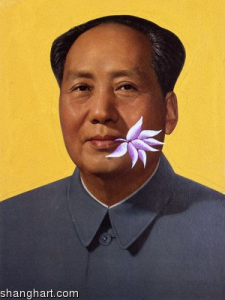Why I Chose To Be A History Major
 By: Michael Mclean, Class of 2014
By: Michael Mclean, Class of 2014
I still remember the first day of my freshmen year history class in High School. The question on the board was, “Why do we study history?” I could not think of an answer. Our teacher went on to list a number of cliches: history repeats itself, we are who we were, and so on. However, it was not long before he revealed the numerous connections between past events and contemporary problems. It was at this moment that I began to understand the importance of studying history. A society that does not understand its history is like a human with no memory. You cannot know where you are or where you are going of you do not know where you have been. Furthermore, history is perhaps the most holistic subject. History is not limited to names and dates, but encompasses science, math, philosophy, analytical skills, sociology, and language. I believe that history must reassert its importance and inclusive nature if we are to succeed as a society. Only by fully investing in such an undertaking can we begin to address immense problems in a troubled and changing world. For these reasons, I chose history as my major.
In Tanzania with Trinity’s African Development Coalition
By Seth Markle, Assistant Professor of History & International Studies
This past summer I had the pleasure of serving as an on-site faculty adviser for the Trinity student-led organization, the African Development Coalition (ADC) and its project in Tanzania (East Africa). In working closely with the Ministry of Health, NGOs and local leaders, ADC built a maternity ward in the under-resourced village of Lotima in Himo. “The idea of the organization is each year to pick one African country that we want to learn about,” said ADC co-founder and chairman Ibrahim Diallo. “We conduct extensive research on the country and come up with a project that we feel reflect the challenges that the country is facing. We then fund raise for the project and over the summer travel to the selected country to carry out the project.” In its first year, ADC renovated a crumbling primary school in a small village in Guinea, installed a clean drinking water pump in the school and built a house for teachers. Last year, ADC went to Sierra Leone and built three computer labs housing a total of 80 computers in the oldest university in West Africa, Fourah Bay College.The ADC project in Tanzania is designed to empower villagers whose quality of life is hampered by the lack of health-related resources.
(more…)
Professor Greenberg returns from Teaching in China
For the 2010-2011 academic year, Professor Greenberg was in China on a Fulbright scholarship (Fulbright U.S. Scholars program), teaching at Wahun University.
Here’s an excerpt from her blog, China Chronicles: Adventures of a Hapless American in the Middle Kingdom:
“The talks were always fun. The audiences varied from English (language) majors to students of international trade and finance, but they all had good enough English to (mostly) follow my talks. The smallest group I spoke to was about 30 students but mostly they packed the room, either excited or coerced to listen to an international professor. In some cases I was the first foreign professor they had met. The faculty were more mixed in their response – in English and History departments they turned out in force while, not unexpectedly, those in finance or technology only showed up if they had to introduce me. But everyone who came was incredibly polite and kind, and usually seemed quite enthusiastic. The topics (since you asked) really ranged widely, which made it more fun for me. I was often asked to give a lecture on “The History of Race Relations in the US” which is really African American history on one foot, but I also spoke on the history of rock ‘n’ roll (probably the most fun for me – and for them – since I played all the songs), race in the age of Obama, the Great Depression, the civil rights movement, and another favorite of mine, advertisements and American culture.”
For more insight and information on Prof. Greenberg’s experience in China, go HERE.
Professor Bayliss Reflects on Japan and its Future

In the summer of 2011, Professor Jeff Bayliss traveled to Japan to assess the social, political, economic and cultural impact of the tsunami in Japan.
Here’s an excerpt from his blog: Where Does It All Go?: An Aftermath Travelogue:
“One thing that struck me repeatedly while I was in Tohoku was how the disaster seemed to still be going on for many of the people in the hisaichi, and in many different ways. I’m sure it seems odd to put it like that. The last waves have of course long since receded, and in most areas the chaotic clutter of debris has at least been cleared and placed in tremendous piles that represent the first big step in salvaging order from chaos. Even for the most dislocated of the survivors, the hinanjo shelters too are poised to become a thing of the past, meaning that they will be on their way to regaining their privacy and – with any luck – financial independence as well. And yet, the landscape in the hisaichi still looks like a bizarre moonscape in parts, with busted buildings and the naked foundations of now absent structures everywhere one looks. On the psychological level, too; survivors still seem to want to talk about the early days, whether to “outsiders” or among themselves, as if the things they experience are still replaying in their heads. Many do so in a way that suggests a sense of awe at what they witnessed, but otherwise they seem to have come to terms with it. Deep down, however, I doubt this is the case; they replay the events because they are still searching for something in them, some element of meaning, perhaps, that once found will allow them to relegate March 11th and its aftermath to the realm of memories that don’t have to constantly be recalled and relived – if that is possible for events of such enormity. For others, however, the need to recall and relive what they say is more like the curse we outsiders might expect it to be; they would rather forget, but can’t.”
For more insight and information, go HERE.
China Odyssey: Reflections on Shanghai Art & the Jade Buddha Temple
 By: Bo Hershey, Class of 2012
By: Bo Hershey, Class of 2012
The Shanghai Propaganda Poster Art Centre provides viewers with a place of historical reference. When viewing the various forms of Chinese propaganda one sees that each period had its unique style. When looking even deeper one finds that every poster tells a different story. When observing the propaganda posters of the Cultural Revolution the viewer is provided with primary source of that era. These posters are not similar to contemporary art forms of the 21st century. Instead they speak to the sensibilities of that time. The collection of posters found at the Propaganda Center shows the kinds of art forms accepted under Mao. The visual language of each poster shows that political propaganda was the major art form of that era. Each poster seems to have the same kind of political tone. Yet the themes of each of the posters seem to tell a different story. A few are a glorification of Chairman Mao. Here the posters show Mao as a cult figure. When looking at these posters one can see similarities to the Spanish baroque paintings that presented the Hapsburgs as regal leaders of their domain. The poster artists of the Mao era follow a similar technique by making Mao the central figure of the poster. The anti-Western bias is another interesting feature found in many of the posters. These kinds of posters were used as a way to change the viewers perception in a negative light. Propaganda in many ways is an art form whose purpose is to influence the viewer into believing the story presented. Basically, the posters of this era are no different from those other art works. The role of the viewer is to understand the artist’s objective and make judgments that question the reason for its creation.
(more…)

